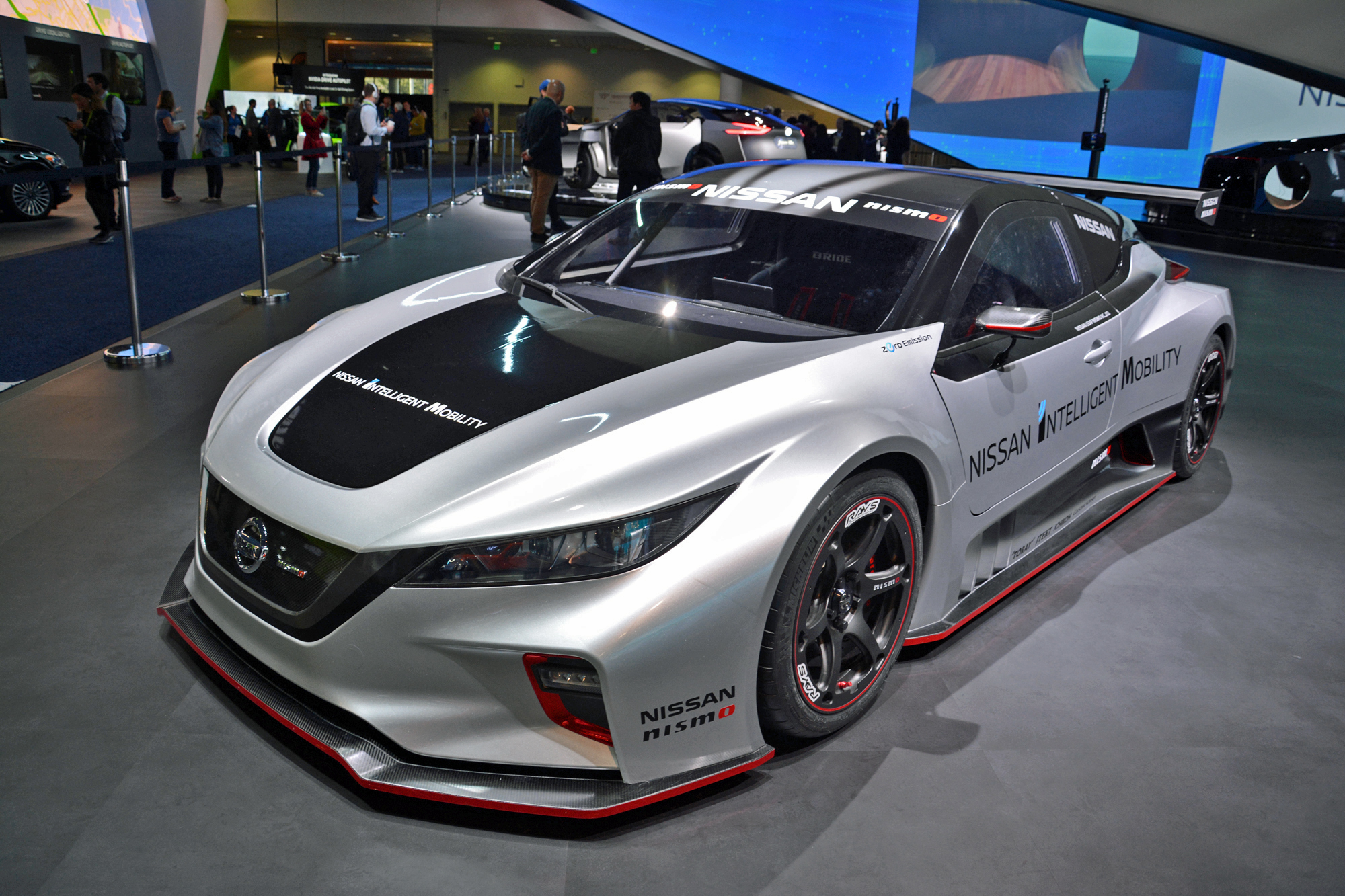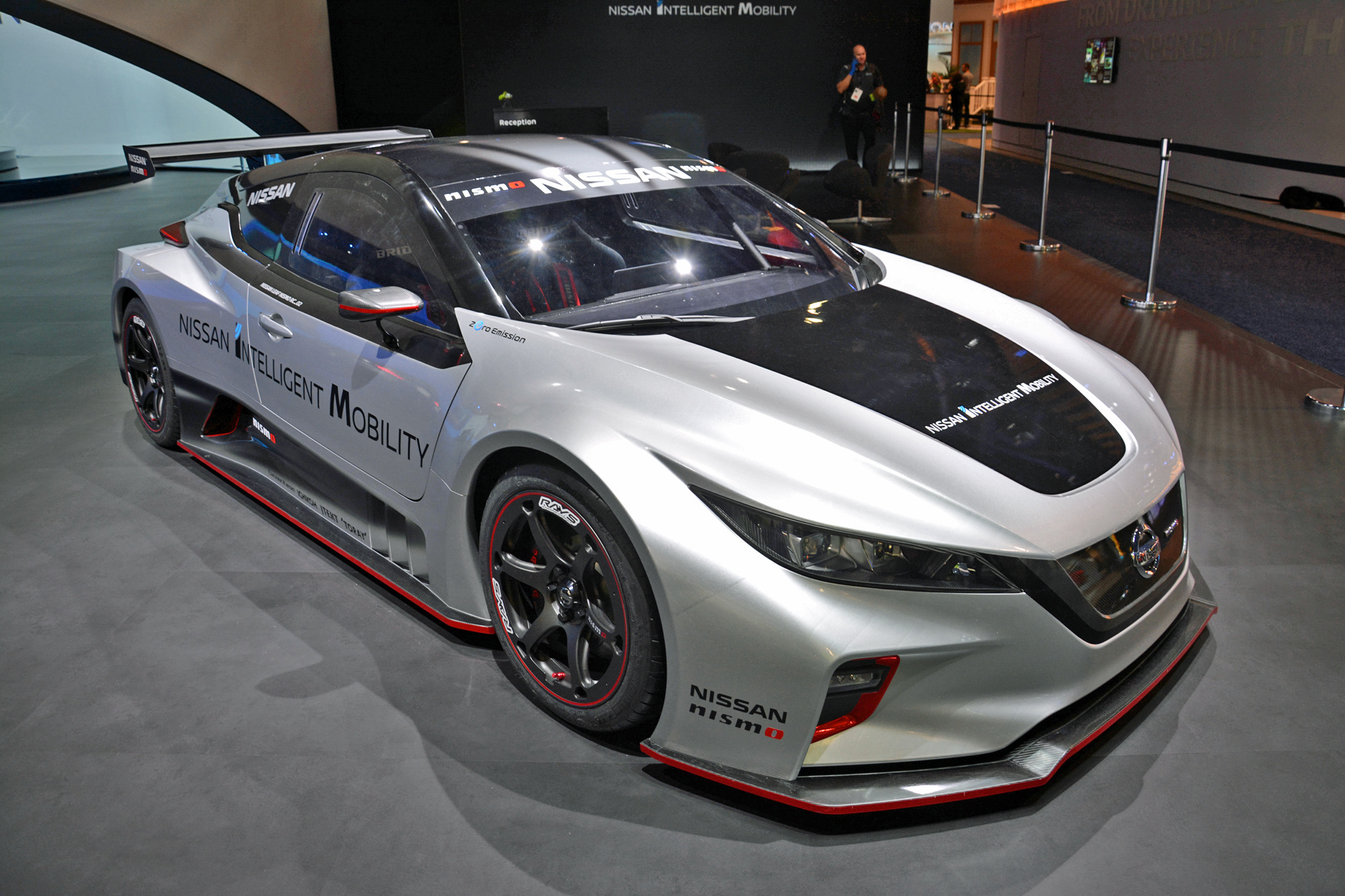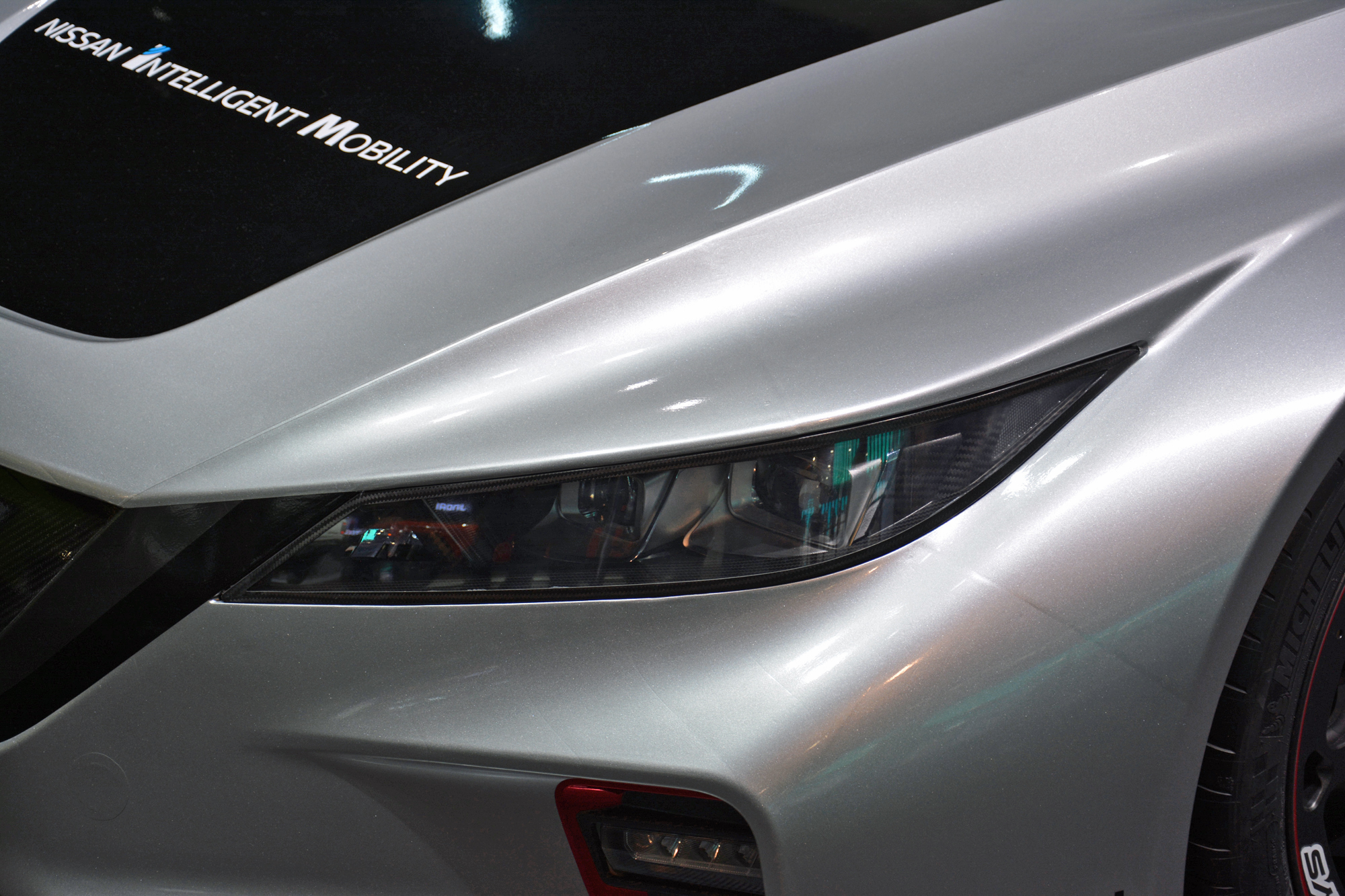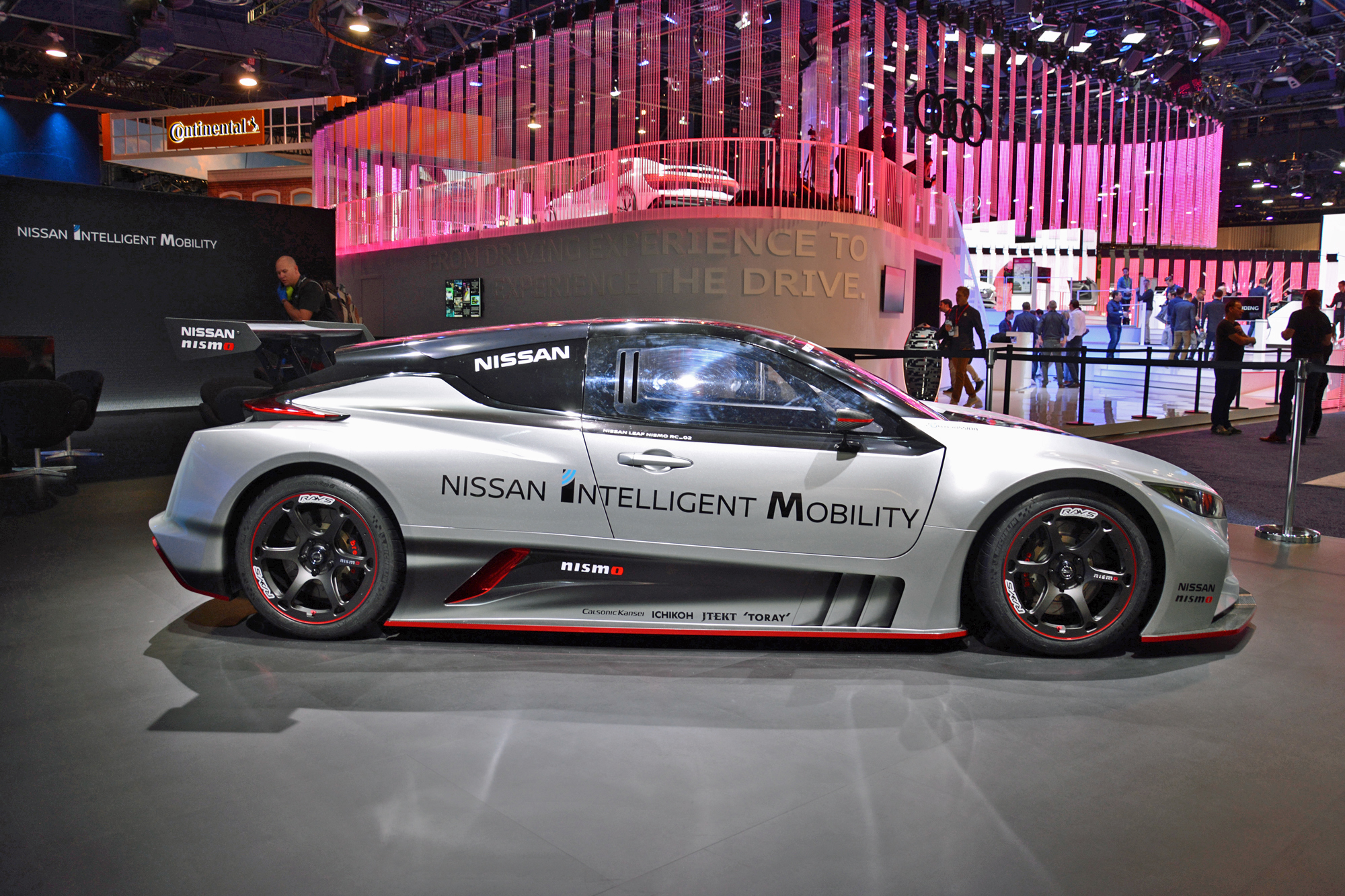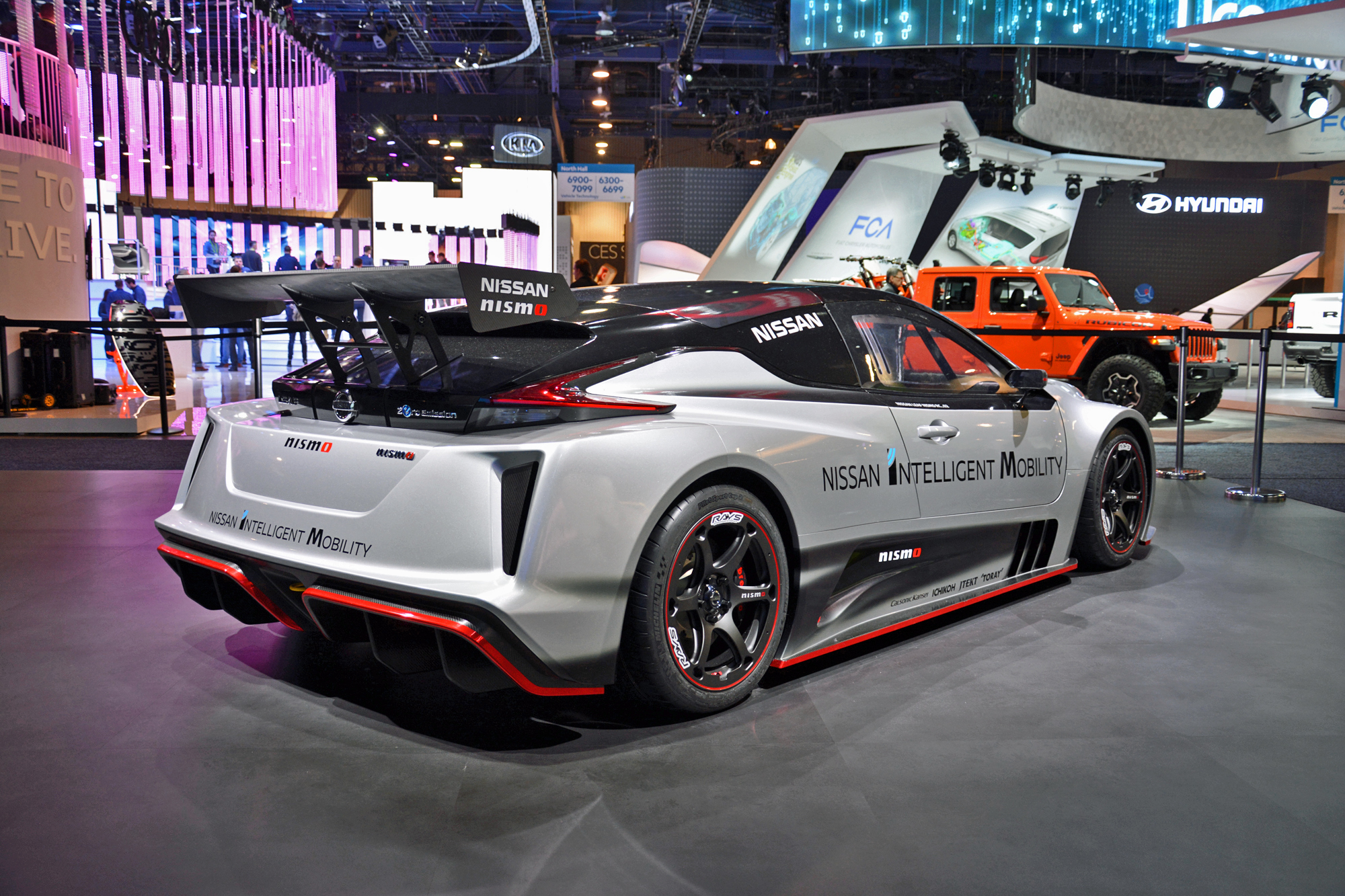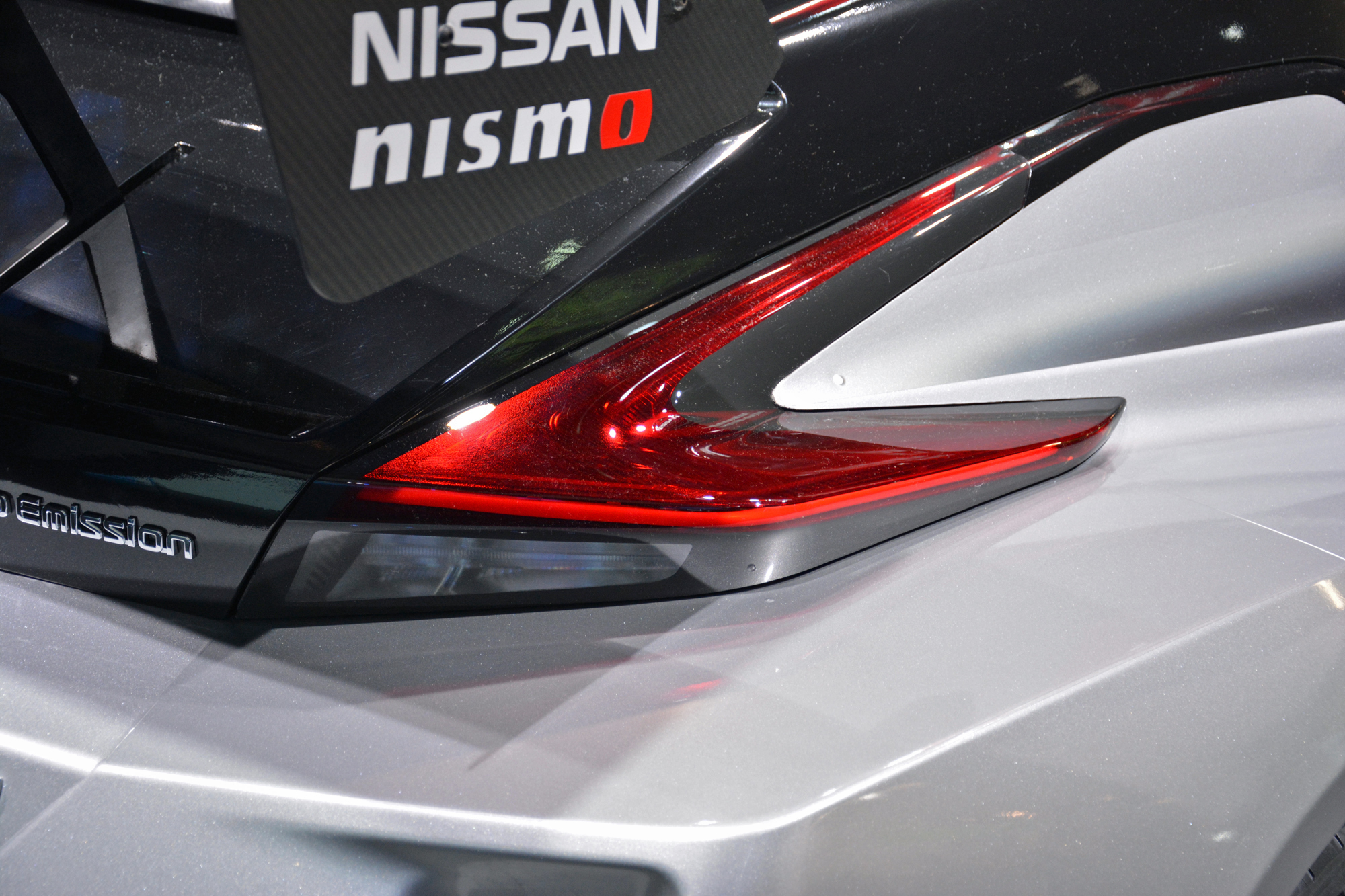Nissan’s next performance flagship could run on electricity rather than horsepower, according to one of the brand’s top executives. The Japanese firm is experimenting with ways to reliably extract jaw-dropping power figures from its battery-electric components, and we could see the result in showrooms — as well as on the race track — during the 2020s.
The original Leaf hatchback released in 2010 stood out as the first modern, mass-market electric car. Nissan focused on affordability, range, and practicality at the expense of performance when it designed the second-generation model, but a team within its go-fast Nismo division is trying to unlock its potential. The company is testing the Leaf-derived RC 02 on a makeshift race track in Japan to explore which components should remain at the prototype stage, and which ones are eligible to make the transition to production.
On paper, the RC 02 (pictured) has already planted its flag in supercar territory. Two upgraded Leaf motors draw electricity from a 62-kilowatt-hour lithium-ion battery pack to zap the four wheels with 321 horsepower and 472 pound-feet of instant torque. These components are installed in an expensive carbon fiber tub, which isn’t likely to make it beyond the one-off stage for cost reasons, but the rest of the hardware could come together into a high-voltage flagship capable of leaving the 2017 Nissan GT-R Premium review in the dust.
Motohiro Matsumura, Nismo’s chief operating officer, told The Drive that Nissan’s next-generation electric car — which is tentatively called IDS — could receive many powertrain parts from the RC 02. “After 2020, we might have a production motor with [214 hp], two of them would bring [430 hp]. With that, it is possible that the IDS beats the Nissan GT-R,” he predicted.
The entire industry will sit up and take notice if Nissan releases a GT-R-beating, 430-hp electric car. And yet, that model could end up looking puny next to the flagship model Matsumura has in mind.
“Quad motors are possible, even highly probable,” he teased. In this configuration, each 214-hp motor would presumably spin one of the car’s wheels. The setup would deliver through-the-road all-wheel drive and approximately 850 hp, a figure which would make the model Nissan’s most powerful road car to date. Acceleration will depend on the material used to build the car, and the type of battery it’s fitted with.
Where does this leave the GT-R? The coupe — whose performance chops have earned it the nickname Godzilla — will return for at least one more generation in the coming years, but it’s unlikely to feature any kind of electrification. Speaking with Motor1, chief product specialist Hiroshi Tamura revealed GT-R buyers have no interest in a hybrid model, partly because the technology would make the coupe much heavier and much more expensive.
